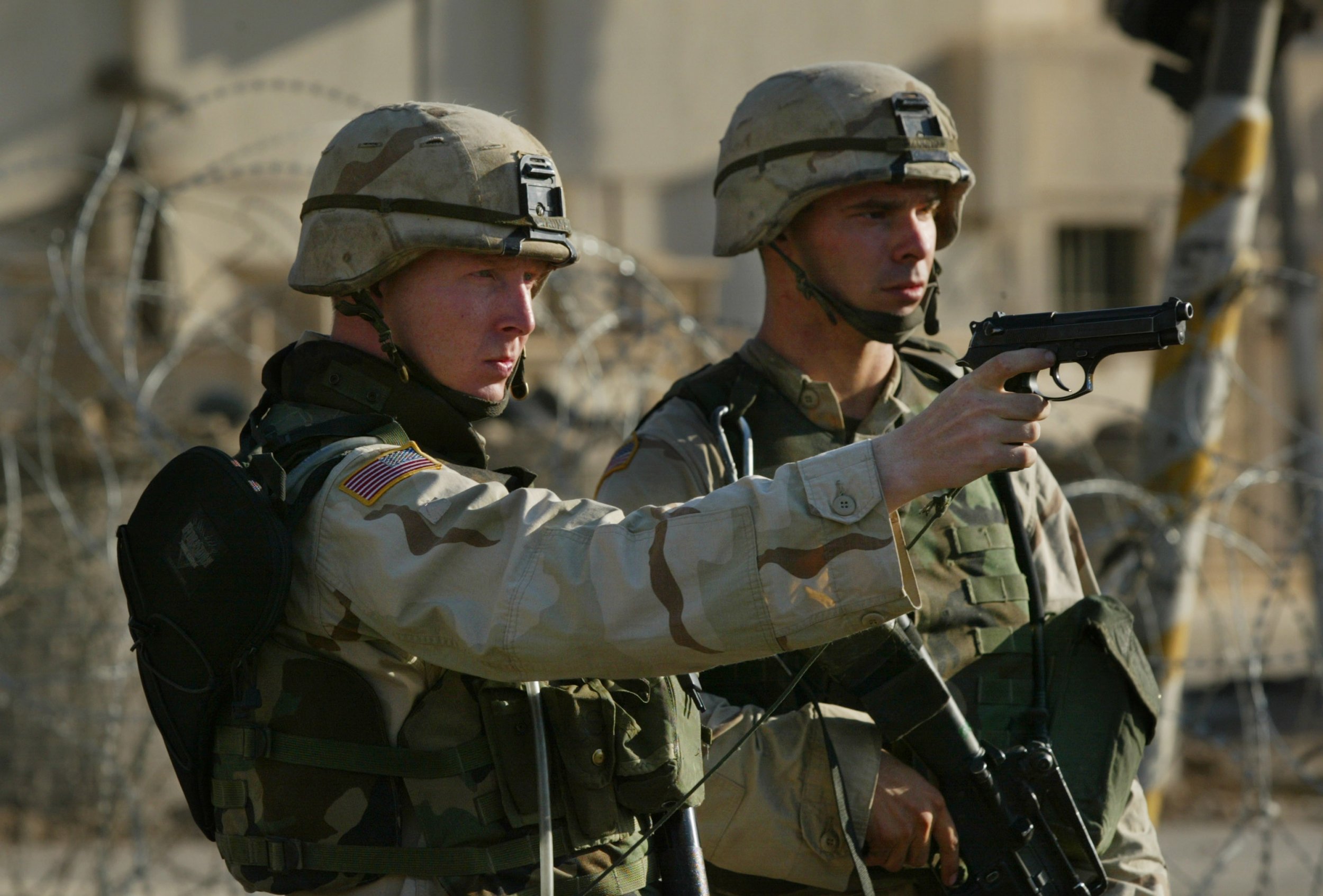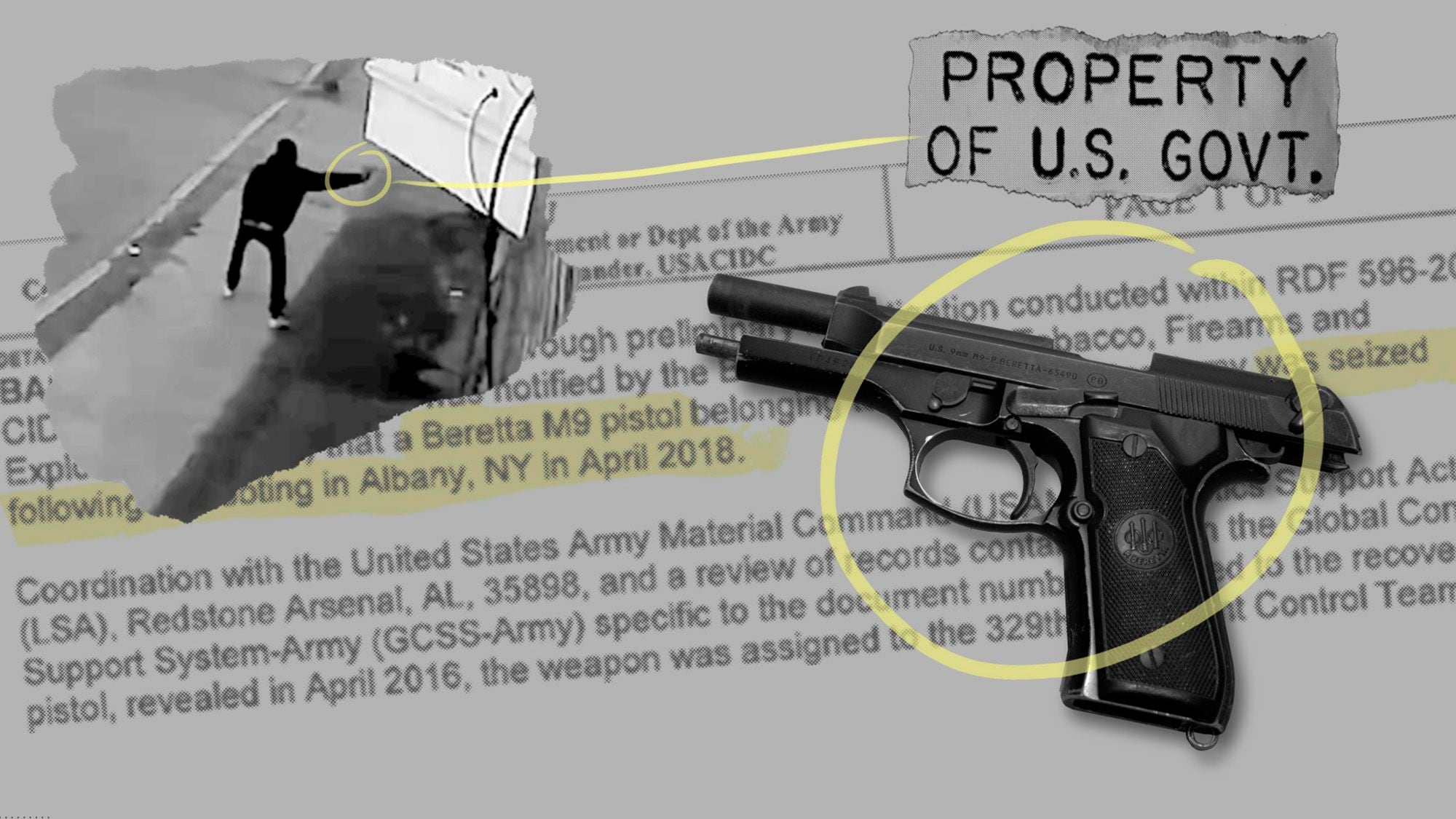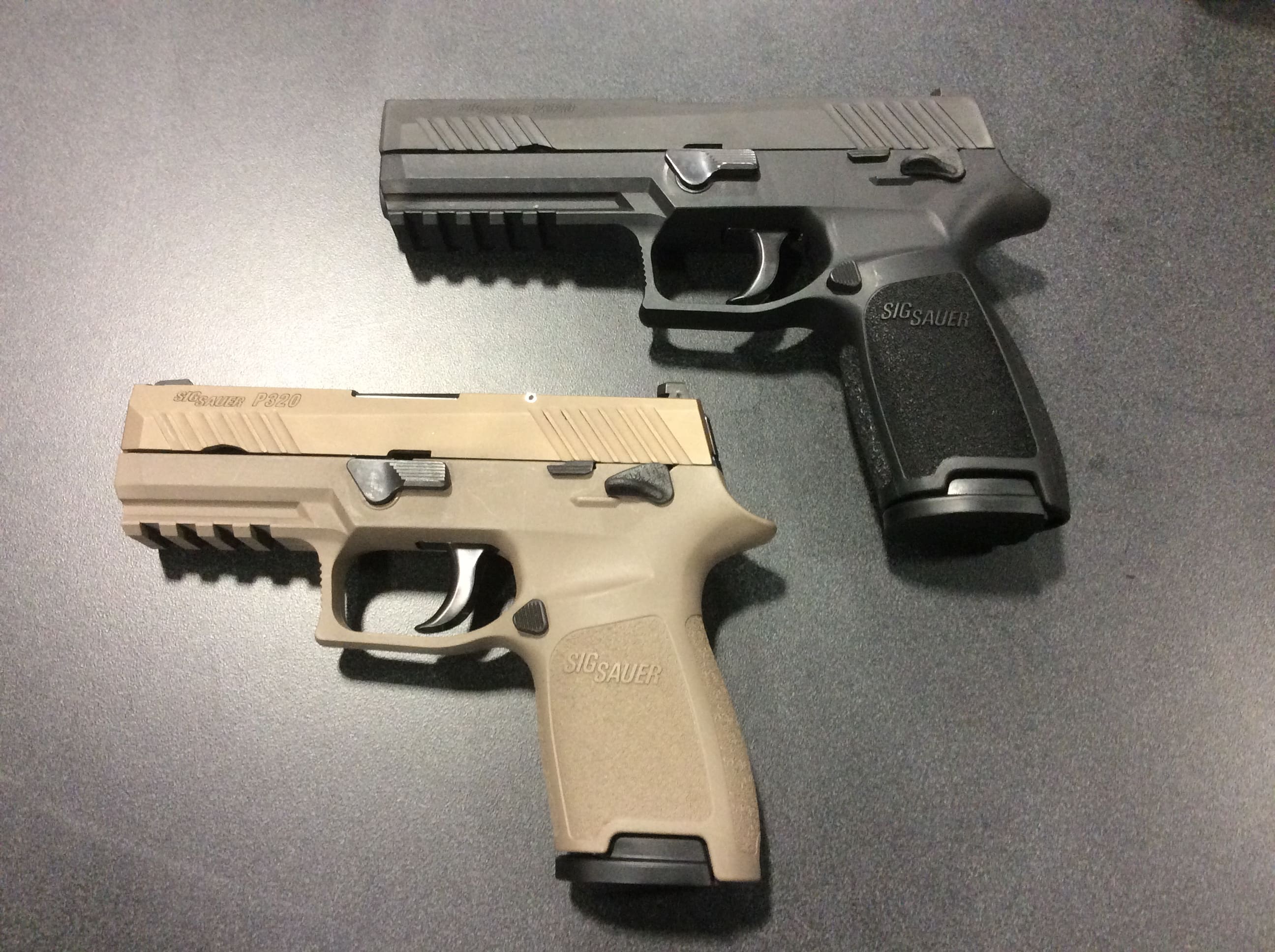Us Army Handgun - Tool-obsessed editors handpick every product they review. Purchases made through links may incur a commission. why trust us
Earlier this year in late January, the U.S. Army chose a new pistol to replace his Beretta M9, a weapon that has served the military for three decades. But like all weapons in the U.S. arsenal, Army pistols evolved slowly, from the slow-loading flintlock pistols that helped build the nation, to the polymer-framed pistols used in conflicts around the world today. evolved into a semi-automatic pistol.
Us Army Handgun

The first American sidearms were copies of British guns. Based on the British Model 1760, the Model 1775 was a .62 caliber smoothbore his flintlock. The American pistol was manufactured at Rappahannock Forge (pictured above) in Virginia. The factory was a major production base and arsenal for the Continental Army, where he produced 80,000 muskets during the American Revolutionary War. Copies of the Model 1775 pistol were later manufactured at Harpers Ferry. This gun was redesignated Model 1805 and was the weapon of choice in 1812. during war.
The Us Army Is Issuing Its New M17 Pistols To Many More Troops Than Its Predecessor
North and Cheney modeled this pistol after his M1777 in France. This particular flint was hung in President Kennedy's Oval Office.
After the Revolutionary War, Connecticut blacksmith Simeon North won a contract to build a new pistol. Based on the French pistols of the time, North's new gun was smaller than his 1775 predecessor. A model with a side-mounted rocker arm and a larger .72-caliber ball. In 1813 North received another contract for his 20,000 pistols from the U.S. Army. They were supposed to be fully stock, fire .69 caliber balls, and most importantly use replaceable parts. This is his one of the first contracts requiring such functionality.
At the Battle of the Thames, Colonel Richard Johnson fires a flintlock and kills the Shawnee warrior Tecumseh.
Owning these pistols can mean the difference between life and death. During the War of 1812, Colonel Richard Johnson was wounded in the arm while fighting Tecumseh's Shawnee soldiers. The veracity of this account is still debated, but according to one story, Johnson barely had time to raise his flintlock pistol and shoot Tecumseh, the native leader of "Unquestionable Courage." . Johnson used this episode to launch his political career and become the 9th Vice President of the United States.
M18 Pistols Successfully Completed Acceptance Test For U.s. Army
North continued to produce pistols, producing the Model 1826 for the Navy. His last Flintlock pistol was issued in the United States in 1836, the same year Samuel Colt patented a revolutionary new revolver. Gunsmith Asa Waters built his 1836 through his early 1840s. A model, a weapon widely used during the Mexican-American War.
For nearly a century, the flintlock was the primary ignition system in firearms, but it was too weather-sensitive and unreliable, and by the 20th century, in the 1940s, many major European countries such as Great Britain and France had began abandoning the increasingly obsolete flintlock pistol. to the new striker-fired pistol. These new guns used a mercury firing cap fulmate instead of flint to ignite the gunpowder. The U.S. used the old flintlock system in his 1930s and 1940s before gradually transitioning to the new percussion cap revolver.
Officially adopted in 1848, the percussion revolver was a giant leap in firearms technology. The most basic improvements were simple calculations. Soldier now fires 6 of his shots instead of 1 before reloading. But the firepower of these new pistols was also in high demand, making the revolver one of the most iconic weapons of America's bloodiest conflict.

The first US revolver was the Colt Dragoon, originally designed for the Army's Mount He Rifle Regiment. The Dragoon was a modification of the earlier Colt-Walker rifle that was widely used during the Mexican-American War. The Dragoon would be the first in a series of Colt pistols used in the United States in the 19th century.
Despite Adopting Sig Sidearms, The Army Awarded Glock A $15 Million Contract
Then the Civil War began, and soon many percussion revolvers fell into the hands of Union and Confederate soldiers. Union mainly issued Colt and Remington revolvers. Approximately 130,000 .44 caliber Colt Army Model 1860s were purchased, along with many Colt 1851 and 1861 Navy revolvers.
After a fire at Colt's Connecticut plant after 1864, the Army ordered a number of Remington Model 1858 pistols to fill the gap. The solid-frame Remington was a rugged pistol that was arguably superior to the open-frame Colt revolver.Remington continually improved the Model 1858 based on suggestions from the U.S. Army Ordnance Service.
Pistols on both sides were often the soldier's last line of defense. A Confederate newspaper reported that an artillery commander, badly wounded at the Battle of Valverde, "refusing to fly or leave his post, with revolver in hand... fought to the end and died a glorious heroic death." ” reported.
"Releasing the revolver from the hand of the outstretched gray figure, he rolled down the neck of the mountain, lost in the swirl of dust and the running horse... both my pistols empty. It turns out there was 5 rebels who didn't want it there, it caused more trouble for us and many others who got hurt.
Air Force Airmen Finally Receiving M18 First New Pistol In 35 Years
As another Union cavalryman wrote, it was not uncommon for cavalry to carry multiple revolvers. I had a Colt on his 4, 2 of him in the belt, 2 of him in the saddle in his holster and it was never excessive. Our compatriot carried six of him.
"I had four colts, two on the belt and two in the saddlebags, and it was never too much.
The industrial power of the North allowed the Union to gain the upper hand throughout the war, forcing the Confederates to use pistols imported from Europe and locally manufactured. These included Adams, LeMat, Kerr pistols, Colt replicas, Spiller & Burr and other revolvers made by Griswold & Gunnison.

Closed metal cartridges became increasingly popular at the end of the Civil War. The late 1860s and his early 1870s saw another revolution in small arms as percussion pistols gave way to cartridge revolvers such as the Smith & Wesson Model 3 and the legendary Colt Single Action Army.
The Sig P320 Is The U.s. Army's New Sidearm
1870 Army purchases first metal cartridge revolver from Smith & Wesson. The Model 3 was a top-loading revolver that rotated the barrel and cylinder downward to open the action, allowing the user to quickly reload the gun. The new metal cartridge eliminated the need for loose powder and percussion caps, and greatly improved the revolver's rate of fire, as a skilled shooter fired all six rounds in less than five seconds. Its big rival, the Colt, wasn't far behind.
In 1871 Colt introduced his first cartridge revolver, one year after Smith & Wesson's patent expired. Colt turned to William Mason, an experienced engineer who had worked on previous Colt pistols. Mason created a pistol similar in appearance to many of his previous Colt revolvers, but the new design included a rear-loading his gate and Mason's patented extractor, which was aimed at the side of the barrel. A rod was included. This feature was later used by the United Action Force.
The Colt 1871 "Open Top" used the popular .44 Henry Rimfire He cartridge. When the Army tested the new Colt pistols, they complained that the .44 was too weak to fire and that the open-top construction was not as powerful as competitors' Remington and Smith & Wesson pistols. The Army demanded a more powerful cartridge and a sturdier frame.
Colt soon produced a series of three prototypes of his pistol for testing and inspection. This new revolver was the prototype for the now legendary Colt Single Action Army. Designed by William Mason and Charles Brinkerhoff Richards, the new pistol has a sturdy frame and fires the new Colt .45 caliber centerfire his cartridge. This weapon
History Of The Pistols And Sidearms The Us Military Has Used
After successful trials, the Army adopted the Colt revolver as the Model 1873. The new Colt Single-Action Army has a 7.5-inch barrel, weighs his 2.5 pounds, and his first order of 8,000 M1873s replaces the Army's aging Colt 1860 Army Revolver revolver. I was.
The Army also ordered thousands of Smith & Wesson Model 3s.These revolvers had a more advanced upper design and were much faster to load than the Colt.For several years, the two revolvers were used side by side, but with different ammunition. Ultimately, the Army preferred the sturdier, more accurate, and easier to maintain Colt, purchasing over 30,000 over the next two decades.
The Colt M1873 Single Action Army continued to serve in all US military campaigns from 1873 to 1905. They were even captured by General Custer and his men at the Battle of Little Bighorn.

Despite its sacred status, the United Action Force was still not the pinnacle of weapons technology. The Single Action Army had a good stopping power, reliability and simple action, but was slow to reload and fire. To solve some of these problems, the military requested new double-action revolvers. The Colt Model 1892 was the first double-acting revolver issued to the United States Army.
File:us Army's 9mm Service Pistol.jpg
Us army basic training, us army officer, us army education, us military handgun, us-army, army ranger handgun, us army national guard, us army handgun contract, us army sign up, us army enlistment bonus, us army guard, us army
0 Comments